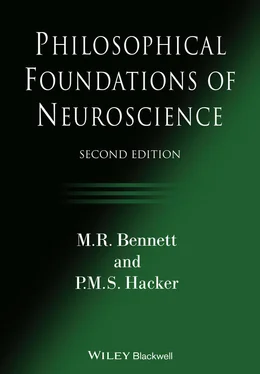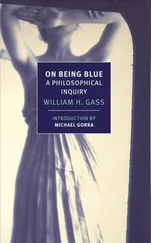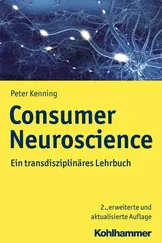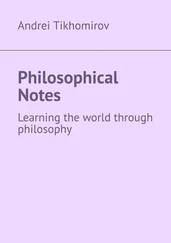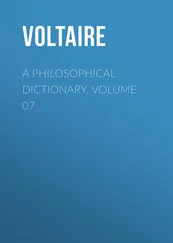The idea of an organ (muscle) reflex
All this was received doctrine. What is important for our present concerns is Fernel’ s observation that some of our acts occur without the action of the will or intent or any other directive of the mind. Such behaviour, he held, is exemplified by certain movements of the eyes and eyelids, of the head and hands during sleep, as well as by the movements associated with breathing. According to Fernel, these muscular movements do not involve an act of will, and therefore can be regarded as reflexes. Fernel was emphatic that muscular movement can occur without the will initiating a voluntary act; that is, there are motor acts in which thinking plays no part. 44This insight marks the beginning of an investigation that was completed only with the work of Sherrington in the twentieth century.
Physiologia went through several editions and had an influence that lasted for a century. However, it could not continue as the definitive text in physiology beyond the middle of the seventeenth century, inasmuch as the Aristotelian concepts and conceptions on which it was based were no longer held to be viable. What, above all, made them obsolete was the rise of Keplerian physical astronomy and Galilean mechanistic physics. The spectacular success of the new physics led to the rapid demise of Aristotelian teleological science, and to the replacement of teleological explanations of natural phenomena by mechanistic explanations. This was equally evident in the advances in the biological sciences as in those of the physical sciences. First, Harvey showed that the heart was a mechanical pump. Second, Descartes argued persuasively that the activities of the body, the subject matter of physiology, could be considered in purely mechanical terms.
Descartes: the beginning of the end of the ventricular doctrine
Descartes (1596–1650) marks a profound upheaval in European thought. Although some aspects of his philosophy are still rooted in scholastic Aristotelian thought (and others in Augustinian thought), the novelty of his philosophical reflections is the starting point for modern philosophy. Much of his neuroscientific research proved wrong, but it provided a crucial impetus and shift of direction for neuroscience. Descartes agreed with the Aristotelian scholastics that the intellect can operate independently of the body, that the soul or mind is incorporeal, that it can exist independently of the body, and that it is immortal. However, he broke with them radically over the following four matters.
Four marks of the Cartesiantransformation of the concep-tion of the mind or soul
First, he held that the mind is the whole soul . The scholastics, by contrast, conceived of the mind (understood as the intellect) as merely a part of the soul (the immortal part that is separable from the body). The other parts of the soul – namely, the nutritive and sensitive functions – are to be conceived, according to the scholastics, in Aristotelian fashion, as the form of the body. Descartes disagreed radically. Unlike Aristotle, he conceived of the soul not as the principle of life , but as the principle of thought or consciousness . The functions of the Aristotelian nutritive soul (nutrition, growth, reproduction) and of the sensitive soul (perception, physiologically conceived, and locomotion) are not essential functions of the Cartesian mind, but of the body. All the essential functions of animal life are to be conceived in purely mechanistic terms. This was to have profound effects on the further development of neurophysiology.
Second, Descartes redrew the boundaries of the mental. The essence of the Cartesian mind is not that of the scholastic-Aristotelian rational soul – that is, intellect alone – but rather thought or consciousness . A person is essentially a res cogitans , a thinking thing – and Descartes extended the concepts of thought and thinking far beyond anything that Aristotle or the scholastics would have ascribed to the rational soul. The functions of the rational soul, according to the scholastics, included the ratiocinative functions of the intellect and the deliberative-volitional functions of the will (rational desire), but excluded sensation and perception, imagination and animal appetite (concupiscence). By contrast, Descartes understood thought as including ‘everything which we are aware of as happening within us, in so far as we have awareness of it. Hence thinking is to be identified here not merely with understanding, willing, imagining, but also with sensory awareness.’ 45Thought, therefore, was, in a revolutionary step, defined in terms of consciousness – that is, as that of which we are immediately aware within us. And consciousness was thereby assimilated to self-consciousness inasmuch as it was held to be impossible to think and to have experiences (to feel pain, seem to perceive, feel passions, will, imagine, cogitate) without knowing or being aware that one does. The identification of the mental with consciousness remains with us to this day, and casts a long shadow over neuroscientific reflection (we shall investigate the contemporary debate concerning consciousness and self-consciousness in Part III).
Third, he held that the union of the mind with the body, though ‘intimate’, is a union of two distinct substances. Contrary to scholastic thought, according to which a human being is a unitary substance (an ens per se ), Descartes intimated that a human being is not an individual substance, but a composite entity. The person (the ego ), on the other hand, is an individual substance, and is identical with the mind. To be sure, because the human mind is united with the body, it has perceptions (psychologically understood). But perceptions thus understood are conceived of as modes of thought or consciousness, produced by the union of the mind with the body. Indeed, it is precisely by reference to the intimate union of mind and body that Descartes explained the non-mechanical perceptual qualities (i.e. colours, sounds, tastes, smells, warmth, etc.) as being produced in the mind in the form of ideas consequent upon psychophysical interaction. Similarly, the mind, because it is united with the body, can bring about movements of the body through acts of will. Hence neuroscience must investigate the forms of interaction between the mind and the brain that produce sensation, perception and imagination (which are ‘confused’ forms of thought), on the one hand, and voluntary movement on the other.
Fourth, just as he conceived of the mind as having a single essential property – namely, thought – so too he conceived of matter as having a single essential property – namely, extension. He conceived of the principles of explanation in the physical and biological sciences alike as purely mechanical, save in the case of the neuropsychology of human beings, who are unique in nature in possessing a mind.
Descartes contributed substantially to advances in neurophysiology and visual theory. 46Although his theories proved to be largely wrong, they were essential steps on the path to a correct understanding. Moreover, his conviction that fundamental biological explanation at the neurophysiological level will be in terms of efficient causation has been triumphantly vindicated by the development of neurophysiology since the seventeenth century. 47
The ventricles conceived as the source of ‘animal spirits’; animal spirits con-ceived as neural transmitters
Descartes replaced the conception of Aristotle, and in particular that of Galen, in which the psychic pneuma was generated in the ventricles, with the hypothesis that the ventricles are the site of generation of corpuscles or particles that directly participate in mechanical phenomena. These are the animal spirits that are conducted by nerves and transmitted to muscle cells, and so effect action. As to the origin of these corpuscles: ‘The parts of the blood which penetrate as far as the brain serve not only to nourish and sustain its substance, but also and primarily to produce in it a certain very fine wind (that is “composed of very small, fast-moving particles”), or rather a very lively and pure flame, which is called the animal spirits .’ 48This is an unfortunate name as it is not an apt descriptive term for components of a mechanical theory, for the word ‘spirit’ can be interpreted as a principle of life that animates the body or as the active principle of a substance extracted as a liquid. However, Descartes is quite explicit that ‘animal spirits’ are material: namely, ‘a certain very fine air or wind,’ 49and that
Читать дальше
